Occupational Safety Training for Lute Manufacturing
99,000 ₫
Note: The above price is calculated per person and may vary depending on the number of trainees participating in the course and market fluctuations. For more accurate pricing support, please refer to the price list or contact our consultants directly.
Occupational safety is an important issue in lute manufacturing plants and needs to be addressed promptly to ensure the health and safety of workers and enhance the reputation of businesses. The Occupational Safety Training course is one of the most effective solutions to raise awareness of accident prevention for workers involved in lute manufacturing.
Table of Contents
Toggle1. Overview of the Lute
a. What is the Lute?
The lute, also called đàn nguyệt, is a plucked string instrument originating from the Middle East and flourishing in Europe during the Medieval and Renaissance periods. It resembles a classical guitar in shape but has a distinctive structure and playing style.
Characteristics of the lute:
- Structure:
- Body: Usually pear-shaped or oval, made from wood.
- Neck: Long and thin, with frets made of wood or bone.
- Resonance Box: Typically large and deep, producing rich and resonant sound.
- Strings:
- The lute has between 6 to 10 strings, often paired, equipped with a variety of strings to create rich tones.
- Playing method:
- Players often use a plectrum to pluck the strings or use fingers. Techniques such as plucking, pushing strings, and sustaining notes are used to produce unique tones.
- Sound:
- The sound of the lute is usually soft, warm, and resonant, suitable for classical and folk music.
- History:
- The lute has a long history and has been used in many cultures. It was a primary instrument in concerts and cultural events in Europe during the 15th and 16th centuries.
- Development:
- During the Renaissance, the lute became a popular instrument in concerts and royal courts. It also influenced the development of other string instruments such as the guitar.
Today, the lute is still used in classical music and traditional performances, and it is highly valued by musicians and classical music researchers for its rich and unique sound.

b. Machinery Used in Lute Production
1. Saws and Cutting Machines
- Band Saw: Used to cut wood into flat pieces or specified sizes. The band saw helps create precise wood pieces for the body and neck.
- Table Saw: Used for highly precise wood cutting, especially for parts like the neck or the lute’s soundboard.
2. Chiseling and Drilling Machines
- Chisel: Used to carve intricate details on wood. Both hand chisels and machine chisels help create fine lines and details on the lute body.
- Drill Press: Used to drill holes for frets and other parts. The drill ensures precise holes for string attachment or other components.
3. Sanding and Finishing Machines
- Sanding Machine: Used to smooth the wood surface and remove scratches. Sanding produces a smooth finish for the lute.
- Finish Sprayer: Used to spray protective paint or oil on the lute surface, enhancing durability and gloss.
4. Assembly and Stringing Machines
- Assembly Jigs: Used to hold lute parts firmly during assembly, ensuring accurate and secure attachment.
- Stringing Machine: Used to tension the strings precisely, producing the correct sound.
5. Detailing Machines
- Router: Used to craft small details such as edges on the body and neck. The router creates precise and decorative lines.
- Engraving Machine: Used to carve patterns or text on the lute surface, such as instrument names or decorative motifs.
6. Hand Tools and Measuring Instruments
- Hand Tools: Tools like hand saws, chisels, and woodworking knives are used for fine tuning and finishing the lute.
- Measuring Instruments: Tools such as calipers and gauges ensure accurate dimensions and angles.
7. Pressing and Forming Machines
- Press: Used to press wood into desired shapes, creating parts like the lute’s soundboard or back with accurate curves and structure.
- Forming Machine: Used to shape the curved body of the lute, defining its form.

c. Famous Lute Manufacturers
1. Hans Frei
- Information: Hans Frei is one of the most famous lute makers in Europe, with many years of experience crafting classical instruments. His products are known for excellent quality and high detail.
2. Paul Thomson
- Information: Paul Thomson is a renowned English lute craftsman. He produces instruments with rich sound and exquisite design, highly appreciated by musicians and collectors.
3. Robert Lundberg
- Information: Robert Lundberg is famous for restoring and crafting lutes in classical styles. He is well-known for recreating lute shapes and sounds from previous centuries.
4. Wolfgang Zuckermann
- Information: Wolfgang Zuckermann is a lute maker and a noted researcher on lute history and craftsmanship. His products combine traditional techniques with innovation.
5. Mauro Raffaelli
- Information: Mauro Raffaelli is a famous Italian craftsman known for lutes with distinctive sound and elegant design. He has made many instruments for musicians and collectors worldwide.
6. David Van Edwards
- Information: David Van Edwards is a renowned lute maker known for his skill and attention to detail. He creates instruments that meet high standards of sound and appearance.
7. Michael Wright
- Information: Michael Wright is a famous North American lute craftsman, known for producing lutes with rich sound and excellent craftsmanship.
8. James Pritchard
- Information: James Pritchard is a well-known lute maker recognized for using classical techniques and high-quality materials to create lutes with excellent sound and durability.

d. Specific Jobs in a Lute Manufacturing Factory
Group 1
- CEO, Deputy CEO, Department Heads in the lute manufacturing factory.
Group 2
- Safety Officers: manage safety in the factory, design safety procedures, supervise and enforce employees’ compliance with safe work processes.
Group 3
- Wood Processing: Cutting, splitting, and flattening wood pieces. Wood is usually air-dried or treated industrially to achieve proper moisture content.
- Cutting and Shaping: Using saws and routers to cut and shape parts of the lute body, such as the front, back, and sides.
- Detail Processing: Carving details such as sound holes and edges. These tasks require high skill to ensure precision.
- Cutting and Shaping the Neck: Cutting and shaping the neck from wood blocks, including drilling holes for frets and strings.
- Fret Installation: Installing frets on the neck, ensuring proper placement and secure fitting.
- Assembly: Connecting lute parts, including attaching the neck to the body and installing auxiliary parts like the bridge and nut.
- Inspection and Adjustment: Inspecting the entire instrument to ensure parts fit correctly and making necessary adjustments to improve sound and playability.
- Sanding and Painting: Using sanding machines and paint spraying to smooth the surface, create gloss, and protect the wood. Coatings must be applied evenly and precisely.
- Smoothing the Surface: Using sandpaper and polishing tools to remove any defects on the surface.
- Stringing: Attaching strings to tuning pegs and adjusting string tension to achieve standard sound.
- Sound Testing: Testing the instrument’s sound and making necessary adjustments to ensure desired quality.
Group 4
- Office work, service, sales, and marketing.
- Production management, quality control, human resources management, material management, financial and accounting management.
- Research and development of new products, packaging design.
2. Overview of the Occupational Safety Training Course for Lute Production
Within this article, we focus on issues related to Group 3 because Group 3 directly participates in the production process and faces the highest occupational safety risks. For more information about other groups, refer here.
a. What is Group 3 Occupational Safety Training?
- Group 3 Occupational Safety Training consists of sessions that equip workers with awareness of how to prevent occupational accidents.
- The safety training course helps workers identify and avoid hazards, reducing risks of accidents during work.
REGISTER FOR OCCUPATIONAL SAFETY TRAINING SERVICE
b. Training Duration
Initial safety training duration
- The total training time is at least 24 hours, including exam time.
- 8 hours of theoretical study on occupational safety and hygiene policies and laws.
- 8 hours of theoretical study on basic occupational safety and hygiene knowledge.
- 4 hours of theoretical study on specialized training content.
- 2 hours of practical training on specialized content.
- 2 hours of theoretical examination at the end of the training course.
The safety training center will arrange the schedule into multiple sessions depending on the company’s ability to allocate study time for workers. Typically, there will be 6 training sessions over 3 days, assuming the company can arrange continuous study time.
Periodic safety training duration
- Before the occupational safety card expires, workers who want to renew it must attend a periodic occupational safety training course, with the periodic training duration being at least 50% of the initial training duration.
Explanation: The total periodic occupational safety training duration is at least 12 hours, including exam time. After completing the periodic training and passing the exam, workers will be issued a renewed occupational safety card.
c. Training Course Content
| No. | TRAINING CONTENT | TRAINING DURATION (HOURS) | |||
| Total | Including | ||||
| Theory | Practice | Exam | |||
| I | System of policies and laws on occupational safety and hygiene | 8 | 8 | 0 | 0 |
| 1 | Overview of the legal normative document system on occupational safety and hygiene. | 6 | 6 | ||
| 2 | System of standards and technical regulations on occupational safety and hygiene. | 1 | 1 | ||
| 3 | Specific regulations of state management agencies on occupational safety and hygiene when constructing new, expanding, or renovating facilities for manufacturing, using, preserving, storing, and inspecting machinery, equipment, materials, and substances with strict occupational safety and hygiene requirements. | 1 | 1 | ||
| II | Basic knowledge on occupational safety and hygiene | 8 | 8 | 0 | 0 |
| 1 | Basic knowledge about hazardous and harmful factors at the workplace. | 4 | 4 | ||
| 2 | Methods to improve working conditions. | 1 | 1 | ||
| 3 | Safety culture in production and business. | 1 | 1 | ||
| 4 | Rights and obligations of employers and employees; policies and regimes on occupational safety and hygiene for workers; functions and duties of safety network and hygiene officers. | 1 | 1 | ||
| 5 | Occupational safety and hygiene rules, safety and hygiene signs and instructions, use of safety equipment and personal protective equipment; first aid skills for occupational accidents, prevention of occupational diseases. | 1 | 1 | ||
| III | Specialized training content | 6 | 4 | 2 | 0 |
| Comprehensive knowledge about types of machinery, equipment, substances causing hazardous and harmful factors; risk analysis, evaluation, and management regarding occupational safety and hygiene; safe working procedures with machinery, equipment, and substances with strict safety and hygiene requirements. | 6 | 4 | 2 | ||
| IV | Final exam on occupational safety training content | 2 | 2 | 0 | 0 |
| Total | 24 | 22 | 2 | ||
See more training contents of the 6 groups
d. Occupational Safety Card
After completing the occupational safety training course and passing the exam, workers will be issued an occupational safety card (commonly called occupational safety certificate for Group 3).
The Group 3 safety card clearly shows information such as full name, date of birth, specific job and working environment. It also displays training duration, an official red stamp, and signature confirming course completion.
According to the card issuance regulations stated in Clause 2 of Article 24 of Decree 44/2016/ND-CP, there are two cases:
- If there is an employment contract between the employer and employee, the employer must sign, stamp, and endorse the safety card after the employee has completed the Group 3 safety training course from the training unit and passed the exam.
- If the worker is freelance or seasonal without an employment contract, the training unit must sign, stamp, and endorse the safety card after the worker completes the training and passes the exam.

3. Identifying Hazards Affecting Workers in Lute Production
Risks from Machinery and Equipment
- Cutting and Machining:
- Risk: Saws, milling machines, and drills can cause injuries such as cuts, punctures, or impacts if not used properly.
- Polishing and Surface Treatment Machines:
- Risk: Polishing machines can generate wood dust and harmful substances. Surface treatment machines may cause accidents such as impacts or entanglement.
Chemical Hazards
- Paints and Solvents:
- Risk: Paints and solvents may contain toxic compounds like benzene, toluene, and formaldehyde, posing health risks when exposed long-term or inhaled.
Risks from Dust and Wood Fumes
- Wood Dust:
- Risk: Wood dust generated during cutting, polishing, and machining can irritate the respiratory tract and cause other health issues such as lung diseases.
Ergonomic and Stress Risks
- Working Posture:
- Risk: Incorrect working posture can lead to musculoskeletal problems, such as back pain or muscle strain.
Noise Hazards
- Noise from Machinery:
- Risk: Machinery used in production can produce high noise levels, causing hearing damage.
Risks from Sharp Objects
- Cutting and Chiseling Tools:
- Risk: Cutting and chiseling tools may cause cuts or punctures if not handled carefully.
Temperature Hazards
- High Temperature:
- Risk: Some production processes like painting or surface treatment may generate high temperatures or require working near heat sources.
Physical Risk Hazards
- Risk from Impact and Falling Objects:
- Risk: Materials or tools may fall or collide, causing injuries.

4. Safety Measures for Participating in Lute Production
Training and Awareness
- Safety Training:
- Provide safety training to all employees, including proper use of machinery and tools, hazard recognition, and emergency response procedures.
- Awareness and Rules:
- Ensure all employees understand and comply with company safety rules, including use of protective equipment and preventive measures.
Use of Personal Protective Equipment (PPE)
- Gloves and Safety Glasses:
- Wear cut-resistant gloves when using cutting tools and safety glasses when working with machinery that poses injury risks.
- Masks and Respirators:
- Use dust masks and respirators when working with wood dust or chemicals to protect the respiratory system.
- Hearing Protection:
- Wear earplugs or earmuffs in environments with loud machinery noise.
- Safety Shoes:
- Use safety shoes with hard toes to protect feet from falling or heavy objects.
Machinery Risk Management
- Machine Operation Training:
- Ensure employees are fully trained on the safe operation of saws, milling machines, and other equipment.
- Machine Inspection and Maintenance:
- Perform regular inspections and maintenance to detect and fix technical issues before accidents occur.
- Use of Machine Safety Devices:
- Install protective devices such as guards and emergency stop buttons to reduce accident risks.
Chemical and Wood Dust Management
- Use Safe Chemicals:
- Select paints and solvents with low VOC content or free of harmful substances.
- Ventilation and Dust Extraction Systems:
- Install ventilation and dust extraction to minimize wood dust and chemical fumes in the air.
- Chemical Storage and Handling:
- Store chemicals properly and comply with regulations on handling and transporting hazardous substances.
- Periodically conduct workplace environmental monitoring in factories to collect and analyze harmful factors affecting workers, then adjust to reduce hazards to prevent occupational diseases.
Posture and Stress Management
- Improve Working Posture:
- Design work areas so workers can maintain comfortable postures and reduce muscle strain.
- Rest and Exercise:
- Encourage employees to take regular breaks and perform simple exercises to reduce muscle tension and enhance health.
Physical Risk Management
- Arrange Materials and Tools:
- Organize materials and tools properly to prevent falling and collisions.
- Use Racks and Supports:
- Use racks and supports to keep materials and tools safe and accessible.
Emergency Handling
- Emergency Plans:
- Establish and communicate emergency plans, including incident handling and first aid procedures.
- Guidance on Rescue Equipment:
- Ensure employees know how to use rescue equipment and basic first aid measures.
Monitoring and Evaluation
- Safety Monitoring:
- Conduct regular safety and health inspections to detect hazards and improve safety measures.
- Effectiveness Evaluation:
- Assess the effectiveness of safety measures and adjust as needed to enhance protection for workers.
5. Benefits of Occupational Safety Training for Lute Production
An Toàn Nam Việt offers your enterprise the following great benefits upon completion of occupational safety training courses in accordance with Decree 44/2016/ND-CP on occupational safety and hygiene for companies, factories, and businesses.
- Workers can identify potential risks of occupational accidents and thus apply preventive measures to avoid accidents.
- Your enterprise can establish risk prevention measures in production, operation, and maintenance processes.
- Reduce costs related to potential occupational safety hazards.
- Uninterrupted production processes help increase labor productivity and product quality.
- Ensure compliance with occupational safety laws and avoid legal risks.
- Create credibility and professionalism in all aspects, thereby elevating your enterprise’s brand.
Nam Việt’s training courses are a solution to prevent and combat external factors affecting individuals, helping them avoid dangers that could cause injury or, more seriously, death.
REGISTER FOR OCCUPATIONAL SAFETY TRAINING SERVICE
6. Customer Feedback After Completing Lute Production Occupational Safety Training
An Toàn Nam Việt has many years of experience in accompanying numerous enterprises across Vietnam in general and southern provinces in particular. This responsibility is very precious to Nam Việt, which is why our Occupational Safety Training is increasingly professional. The motivation behind Nam Việt’s strong development comes from positive feedback and suggestions from businesses. Below are some testimonials from our valued partners we have served.
Bac Nam E&C Investment Construction Joint Stock Company
“The first time using An Toàn Nam Việt’s service, I was very impressed by the 24/7 enthusiastic support from the consulting team. Organizing classes was quick and convenient for our company. Thank you very much for Nam Việt’s service!”
Hoa Dat Construction and Trading Joint Stock Company
“Nam Việt’s service greatly helped us simplify occupational safety procedures and complete safety documentation for the work process. The consulting team responded enthusiastically and promptly to our inquiries. 5 stars for Nam Việt.”
See more customer interviews after using An Toàn Nam Việt’s services
7. An Toàn Nam Việt’s Occupational Safety Training Capability
An Toàn Nam Việt is a reputable and quality occupational safety training center in Vietnam today. Our occupational safety training sessions are continuously held at manufacturing workshops, factories, or construction sites across the country (in all 63 provinces of Vietnam).
REGISTER FOR OCCUPATIONAL SAFETY TRAINING SERVICE
Occupational safety training license
- An Toàn Nam Việt has been inspected and certified by the Department of Safety under the Ministry of Labor, Invalids, and Social Affairs as meeting the conditions to operate occupational safety and hygiene training activities. This further strengthens our occupational safety training capacity.

Training materials and lectures
- Before occupational safety training materials are applied in safety training courses, they are reviewed and approved to ensure the lectures are accurate and effective when applied.
- Our instructors’ teaching methods are standardized according to An Toàn Nam Việt’s teaching standards, developed by occupational safety and hygiene experts to maximize knowledge absorption for learners.
Facilities
- Controlling factors in the training rooms that affect the training process increases teaching efficiency and learner knowledge absorption.
- Our training facilities always feature spacious classrooms meeting standards for area, lighting, and training equipment, etc.
8. Nationwide Reputable Quality Safety Training Center
At An Toàn Nam Việt, we always prioritize professional dedication in occupational safety training. For us, imparting knowledge to workers to protect themselves is a contribution to building the country.
To ensure effective training, we carefully prepare every detail, no matter how small—from preparing tools, teaching equipment, to curricula, documents, audio, and lighting.
Our occupational safety instructors are experts with many years of experience. Some have even conducted research on hazard identification across all industries and ways to prevent them.
Our lectures are based on practical experience and delivered in a vivid, easy-to-understand manner for workers. These factors help learners feel comfortable during study and effectively absorb our knowledge. Naturally, the content closely follows Decree 44/2016/ND-CP.
Thus, learners grasp many hazard prevention measures and how to protect themselves, applying them appropriately in real work situations.
Our training center proudly provides reputable, professional occupational safety training services with the following advantages:
- Competitive training costs while maintaining quality.
- Flexible training schedules aligned with company production situations.
- Quick and legally compliant procedures for issuing occupational safety training certificates.
- Experienced instructors with many years in the profession.
- Classrooms controlled for factors affecting training efficiency and learner knowledge absorption.
- Lessons tailored to occupational safety in enterprises.
- An Toàn Nam Việt works dedicatedly and professionally to support customers accurately and promptly.

9. Additional References for Occupational Safety Training Materials in Lute Production
- Occupational Safety Materials for Lute Production
- Set of Occupational Safety Training Materials
- Occupational Safety Training Test Set
- Occupational Safety Curriculum for Lute Production
- Occupational Safety Multiple-Choice Test for Lute Production
No comments yet

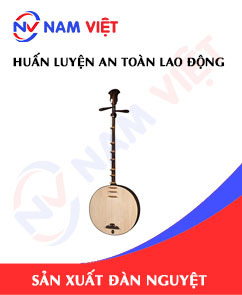
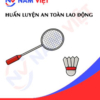
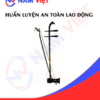



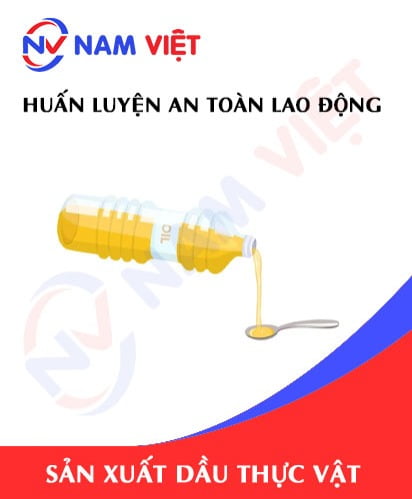
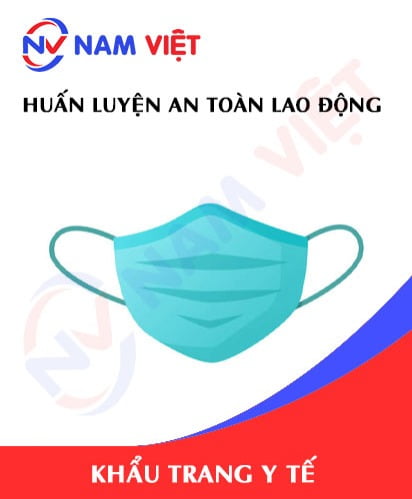
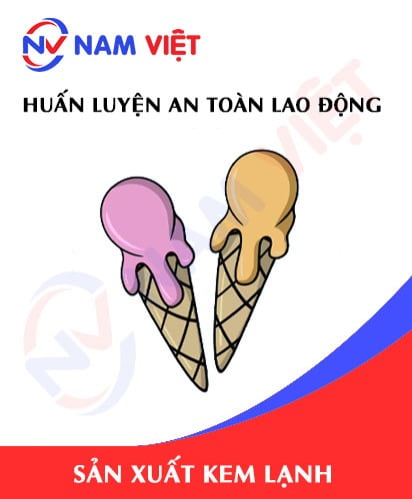
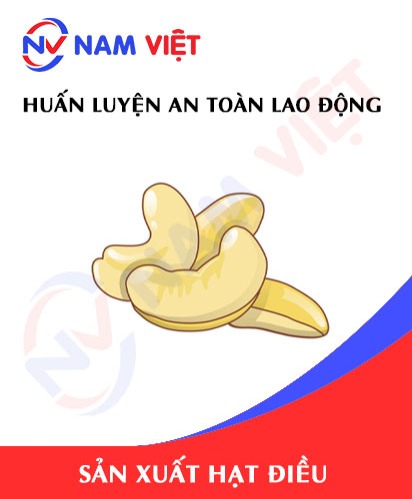
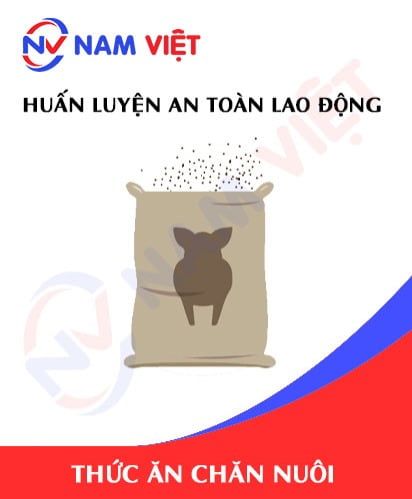



Review Occupational Safety Training for Lute Manufacturing
There are no reviews yet.